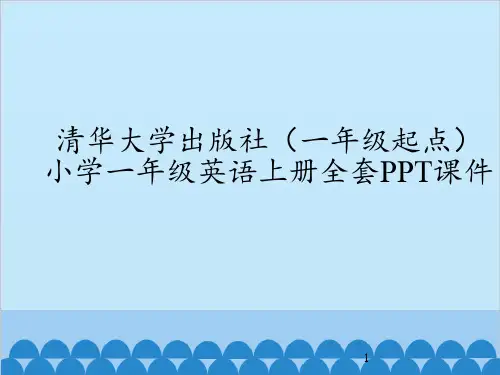小学一年级英语课件
- 格式:doc
- 大小:24.00 KB
- 文档页数:1
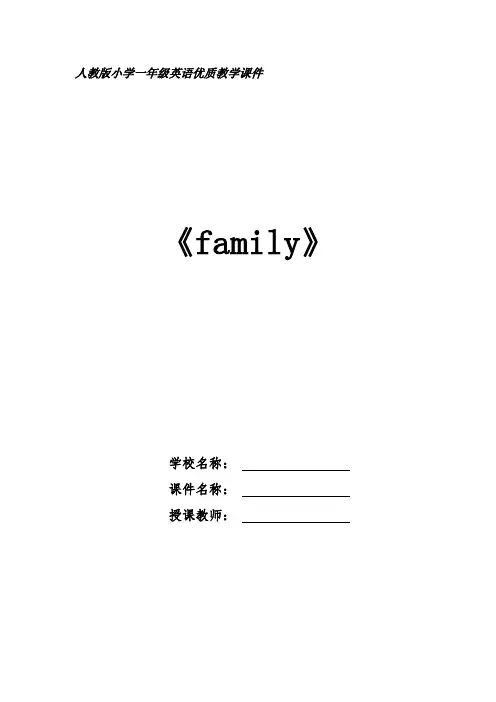
人教版小学一年级英语优质教学课件《family》学校名称:课件名称:授课教师:family小学英语课件教材分析:本课内容主要学习有关家庭的词汇,以及用这些词汇表达自己家庭成员的情况。
学生在学习了father, mother, brother, sister, grandfather, grandmother,以及句型Who's that woman/man?的表达方式。
对家庭成员的称呼和询问有一定的基础;在本课时中,可以在学习新句型Who's this boy/ girl?的基础上,进一步的整合对话内容。
教学目标:1.认知目标:能正确听、说Who’s this boy/girl? He’s my.../She’s my ...;正确理解、运用感叹词Cool, Great, Wow;及常用口语Really?2.能力目标:正确的运用Who’s this boy/girl?这个句型询问,并能正确回答;流利的介绍自己的家庭成员3.情感态度目标:增进学生之间交流合作表演能力;了解其他同学的家庭。
难点重点:熟悉并掌握句型Who's this boy/girl?正确运用口语常用词Come on ! Really ? 及brother ,really ,watch的发音。
课前准备:1.本课有关的录音磁带、图片、头饰、教学挂图。
2.一张自画的全家福照片,学生自备照片。
3.四张邀请单4.CAI课件教学过程:一、Warm up日常口语对话 Hello, How are you?How old are you?Where are you from?Nice to meet you.设计意图:营造轻松愉快的教学气氛,抓住学生的注意力,吸引学生参加活动。
与学生间对话,问候既可以缩短师生的距离又可以培养学生的交际能力二、Presentation1.口语对话结束之后,教师在黑板上粘贴“全家福”,教师指着图介绍This is my dad /mum/sister… Ss: 学生介绍全家福: This is my father (dad)/ mother (mum)/sister/brother …游戏1:对号入座教师出示单词卡片,如father(dad),学生迅速找到相应的照片,请动作最快的学生上台将照片贴在正确的位置上,并大声说出:I’m…This is my dad.表达能力较强的学生还可以在教师的`帮助下做进一步介绍,如:He’s from China. He’s a teacher.设计意图:通过游戏活动使学生从一开始就有一种愉快的体验,以至于使他们忘记了是在学习外语,在无意识注意中积极吸收活动所使用的语言。
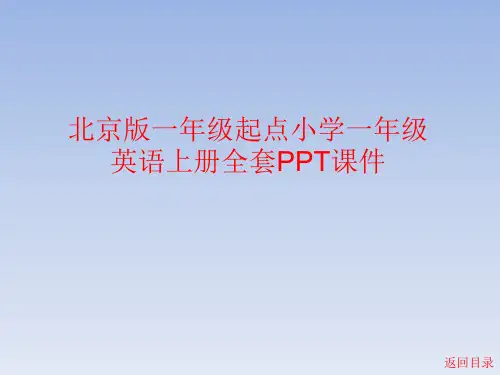
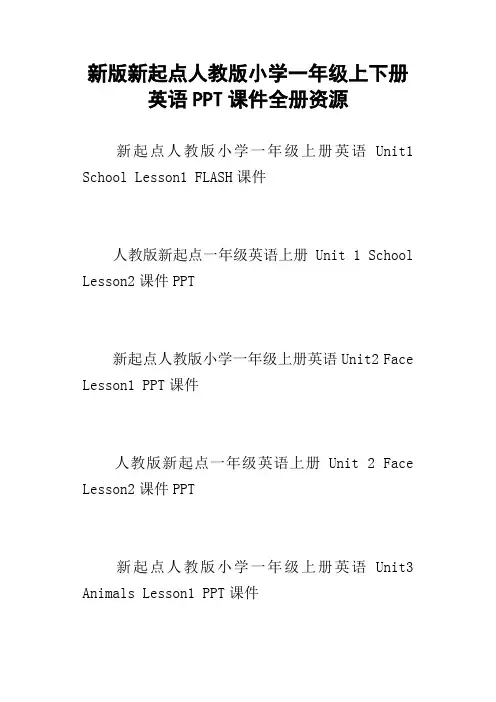
新版新起点人教版小学一年级上下册英语PPT课件全册资源新起点人教版小学一年级上册英语Unit1 School Lesson1 FLASH课件人教版新起点一年级英语上册Unit 1 School Lesson2课件PPT新起点人教版小学一年级上册英语Unit2 Face Lesson1 PPT课件人教版新起点一年级英语上册Unit 2 Face Lesson2课件PPT新起点人教版小学一年级上册英语Unit3 Animals Lesson1 PPT课件人教版新起点一年级英语上册Unit 3 Animals Lesson2课件PPT人教版新起点小学一年级上册英语Unit 4 Numbers课件PPT下载人教版新起点小学一年级上册英语Unit5 Colours课件PPT下载人教版新起点小学一年级上册英语Unit6 Fruit课件FLASH下载人教版新起点小学一年级下册英语Unit 1 Classroom课件PPT人教版新起点小学一年级下册英语Unit 2Room课件PPT人教版新起点小学一年级下册英语Unit 3 Toys课件PPT人教版新起点小学一年级下册英语Unit 4 Food课件PPT人教版新起点小学一年级下册英语Unit 5 Drink课件PPT人教版新起点小学一年级下册英语Unit 6 Clothes课件PPT新起点人教版小学一年级上册英语Unit1 School Lesson1 FLASH课件人教版新起点一年级英语上册Unit 1 School Lesson2课件PPT新起点人教版小学一年级上册英语Unit2 Face Lesson1 PPT课件人教版新起点一年级英语上册Unit 2 Face Lesson2课件PPT新起点人教版小学一年级上册英语Unit3 Animals Lesson1 PPT课件人教版新起点一年级英语上册Unit 3 Animals Lesson2课件PPT人教版新起点小学一年级上册英语Unit 4Numbers课件PPT下载人教版新起点小学一年级上册英语Unit5 Colours课件PPT下载人教版新起点小学一年级上册英语Unit6 Fruit课件FLASH下载人教版新起点小学一年级下册英语Unit 1 Classroom课件PPT人教版新起点小学一年级下册英语Unit 2 Room课件PPT人教版新起点小学一年级下册英语Unit 3 Toys课件PPT人教版新起点小学一年级下册英语Unit 4 Food课件PPT人教版新起点小学一年级下册英语Unit 5 Drink课件PPT人教版新起点小学一年级下册英语Unit 6 Clothes课件PPT新起点人教版小学一年级上册英语Unit1 School Lesson1 FLASH课件人教版新起点一年级英语上册Unit 1 School Lesson2课件PPT新起点人教版小学一年级上册英语Unit2 FaceLesson1 PPT课件人教版新起点一年级英语上册Unit 2 Face Lesson2课件PPT新起点人教版小学一年级上册英语Unit3 Animals Lesson1 PPT课件人教版新起点一年级英语上册Unit 3 Animals Lesson2课件PPT人教版新起点小学一年级上册英语Unit 4 Numbers课件PPT下载人教版新起点小学一年级上册英语Unit5 Colours课件PPT下载人教版新起点小学一年级上册英语Unit6 Fruit课件FLASH下载人教版新起点小学一年级下册英语Unit 1 Classroom课件PPT人教版新起点小学一年级下册英语Unit 2 Room课件PPT人教版新起点小学一年级下册英语Unit 3 Toys课件PPT人教版新起点小学一年级下册英语Unit 4 Food课件PPT人教版新起点小学一年级下册英语Unit 5Drink课件PPT人教版新起点小学一年级下册英语Unit 6 Clothes课件PPT。
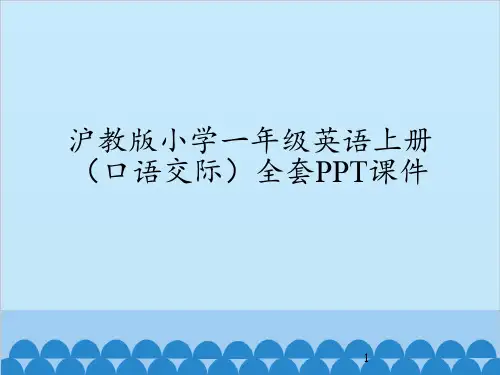
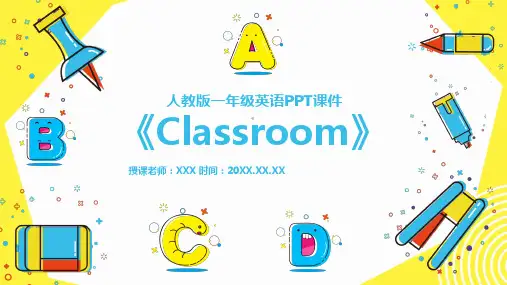
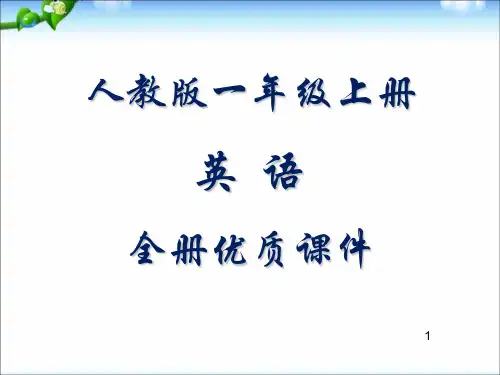
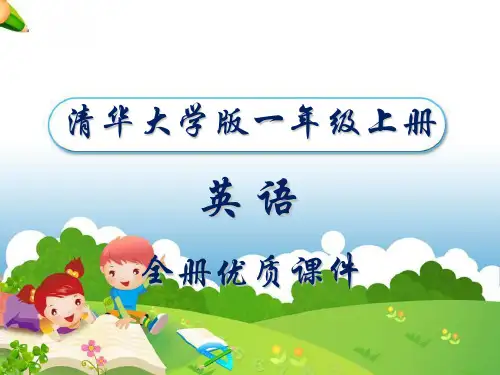

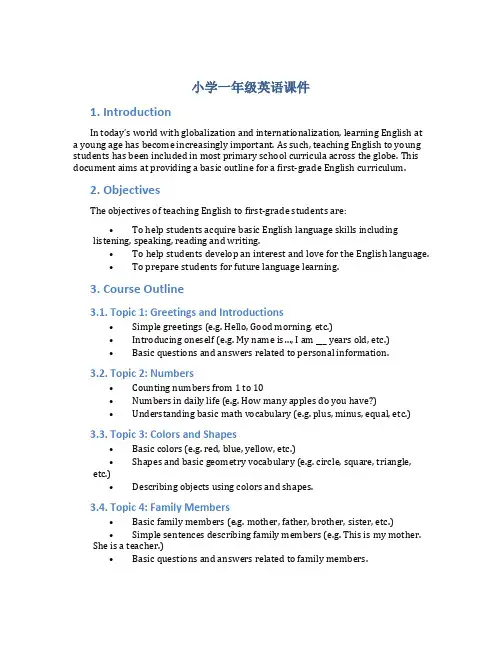
小学一年级英语课件1. IntroductionIn today’s world with globalization and internationalization, learning English at a young age has become increasingly important. As such, teaching English to young students has been included in most primary school curricula across the globe. This document aims at providing a basic outline for a first-grade English curriculum.2. ObjectivesThe objectives of teaching English to first-grade students are:•To help students acquire basic English language skills including listening, speaking, reading and writing.•To help students develop an interest and love for the English language.•To prepare students for future language learning.3. Course Outline3.1. Topic 1: Greetings and Introductions•Simple greetings (e.g. Hello, Good morning, etc.)•Introducing oneself (e.g. My name is…, I am ___ years old, etc.)•Basic questions and answers related to personal information.3.2. Topic 2: Numbers•Counting numbers from 1 to 10•Numbers in daily life (e.g. How many apples do you have?)•Understanding basic math vocabulary (e.g. plus, minus, equal, etc.)3.3. Topic 3: Colors and Shapes•Basic colors (e.g. red, blue, yellow, etc.)•Shapes and basic geometry vocabulary (e.g. circle, square, triangle, etc.)•Describing objects using colors and shapes.3.4. Topic 4: Family Members•Basic family members (e.g. mother, father, brother, sister, etc.)•Simple sentences describing family members (e.g. This is my mother.She is a teacher.)•Basic questions and answers related to family members.3.5. Topic 5: Action verbs•Basic action verbs (e.g. run, walk, jump, etc.)•Simple sentences using action verbs (e.g. I can run fast, She can jump high, etc.)•Describing daily activities using action verbs.3.6. Topic 6: Food and Drinks•Basic food and drink vocabulary (e.g. apple, banana, milk, etc.)•Simple sentences related to food and drinks (e.g. I like apples, She drinks milk for breakfast, etc.)•Basic questions and answers related to food and drinks.4. Teaching MethodologyTeaching English to young children requires a lot of patience, creativity and a variety of teaching methodologies. Keeping this in mind, the following methodologies may be used:•Songs and rhymes•Picture books and flashcards•Games and activities•Role plays and puppet shows•Audio-visual aids5. AssessmentAssessing young English learners requires a different kind of approach. Some of the methods that can be used include:•Observing students during class activities•Listening to students’ speaking and pronunciation skills•Looking through students’ written work and vocabulary retention•Conducting weekly or monthly quizzes and tests6. ConclusionTeaching English to first-grade students requires a lot of effort and dedication, but it can also be an enjoyable experience. With the curriculum and methodologies mentioned above, teachers can create an engaging and fun-filled learning environment for students. As students begin to acquire basic English language skills, they will also develop a lifelong interest in the language and an eagerness to learn more.。
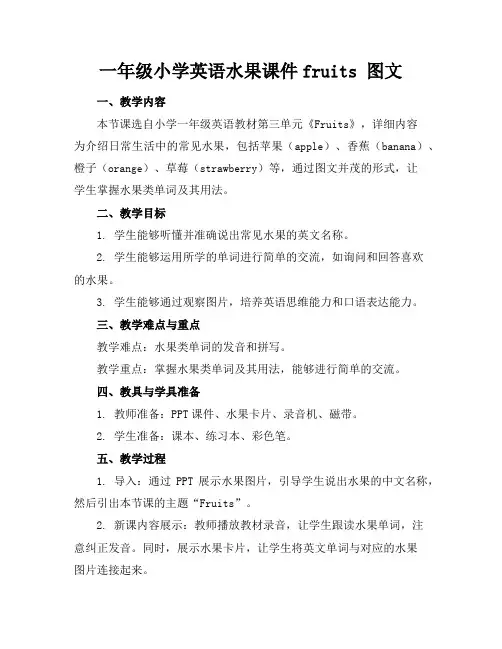
一年级小学英语水果课件fruits 图文一、教学内容本节课选自小学一年级英语教材第三单元《Fruits》,详细内容为介绍日常生活中的常见水果,包括苹果(apple)、香蕉(banana)、橙子(orange)、草莓(strawberry)等,通过图文并茂的形式,让学生掌握水果类单词及其用法。
二、教学目标1. 学生能够听懂并准确说出常见水果的英文名称。
2. 学生能够运用所学的单词进行简单的交流,如询问和回答喜欢的水果。
3. 学生能够通过观察图片,培养英语思维能力和口语表达能力。
三、教学难点与重点教学难点:水果类单词的发音和拼写。
教学重点:掌握水果类单词及其用法,能够进行简单的交流。
四、教具与学具准备1. 教师准备:PPT课件、水果卡片、录音机、磁带。
2. 学生准备:课本、练习本、彩色笔。
五、教学过程1. 导入:通过PPT展示水果图片,引导学生说出水果的中文名称,然后引出本节课的主题“Fruits”。
2. 新课内容展示:教师播放教材录音,让学生跟读水果单词,注意纠正发音。
同时,展示水果卡片,让学生将英文单词与对应的水果图片连接起来。
3. 例题讲解:教师选取几种水果,进行句型问答,如“Do youlike apples?”“Yes, I do./ No, I don't.”,让学生模仿练习。
4. 随堂练习:学生分成小组,用所学的水果类单词进行交流,询问组员喜欢的水果,并做好记录。
六、板书设计板书分为两部分:一部分为水果图片,另一部分为水果的英文名称。
将图片和单词对应排列,便于学生记忆。
七、作业设计1. 作业题目:请用英文写出你最喜欢的水果,并用句子表达出来。
答案示例:My favorite fruit is apple. I like applesvery much.2. 作业题目:根据所学的水果类单词,绘制一幅水果篮子的图片,并用英文标注。
答案示例:In the fruit basket, there are apples, bananas, oranges and strawberries.八、课后反思及拓展延伸1. 课后反思:本节课通过图文并茂的形式,让学生掌握了水果类单词及其用法。
